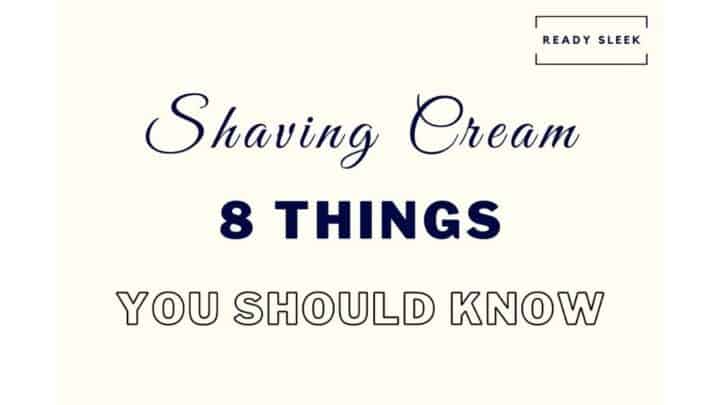Shaving cream may be a simple grooming product, but it’s one we often take for granted. You’re about to learn some stuff about it you probably didn’t know before.
1. Is Shaving Cream The Same As Shaving Foam?
Shaving foam can be considered a type of shaving cream, but specifically shaving cream that’s contained and released from an aerosol can.
Put simply, shaving foam is shaving cream that exits a can with a whooshing noise and instantly forms a lather on your hand. The main reason people go for shaving foam is to save time.
Compare this with more traditional forms of shaving cream such as lathering shaving cream (requiring a brush and whisk) and latherless shaving cream that comes in a tube (i.e non-aerosolized shaving cream).
Shaving foam does save shavers time, but it isn’t the type of shaving cream of choice for most shaving aficionados who prefer a more traditional form.
Plus, there are many men who aren’t comfortable with the propellant hydrocarbons often used to make this aerosolized experience possible.
2. Does Shaving Cream Expire?
Shaving creams will expire after a certain period of time after opening. Cosmetic products, including shaving creams, often have a specific “Period After Opening” (PAO) telling you how long you can use it for after opening.
3. Are Shaving Cream Cans Recyclable?
Aerosol shaving cream cans are usually recyclable, as they’re usually made from tin-plated steel, aluminum, or both. The small plastic and rubber parts used for the lid and dip tube are usually extracted during the recycling itself.
However, it’s important to ensure that your recycling facility actually accepts aerosol cans. They’re pressurized which could be considered hazardous to the workers, so check with the facility first to ensure it’s OK.
4. Can Shaving Cream Freeze?
Yes, shaving cream does freeze. It’s a common problem when having shaving cream delivered in very cold temperatures.
5. What Happens If You Don’t Use Shaving Cream?
If you don’t use shaving cream when shaving with a manual razor, it’s important that you at least use a lubricating alternative.
Suitable alternatives might include shaving oil, shaving soap, shaving gel, or shaving butter.
Whatever you use, do a patch test first to ensure you’re not sensitive or allergic to it.
Conclusion
It isn’t rocket science, but it’s a grooming tool that’s important to get to grips with.
This wasn’t a step-by-step tutorial on how to use it – just a collection of commonly asked yet rarely answered questions on the topic.
Hope you found it useful.
Ready Sleek founder. Obsessed with casual style and the minimalist approach to building a highly functional wardrobe. Also a fan of classic, vintage hairstyles.







